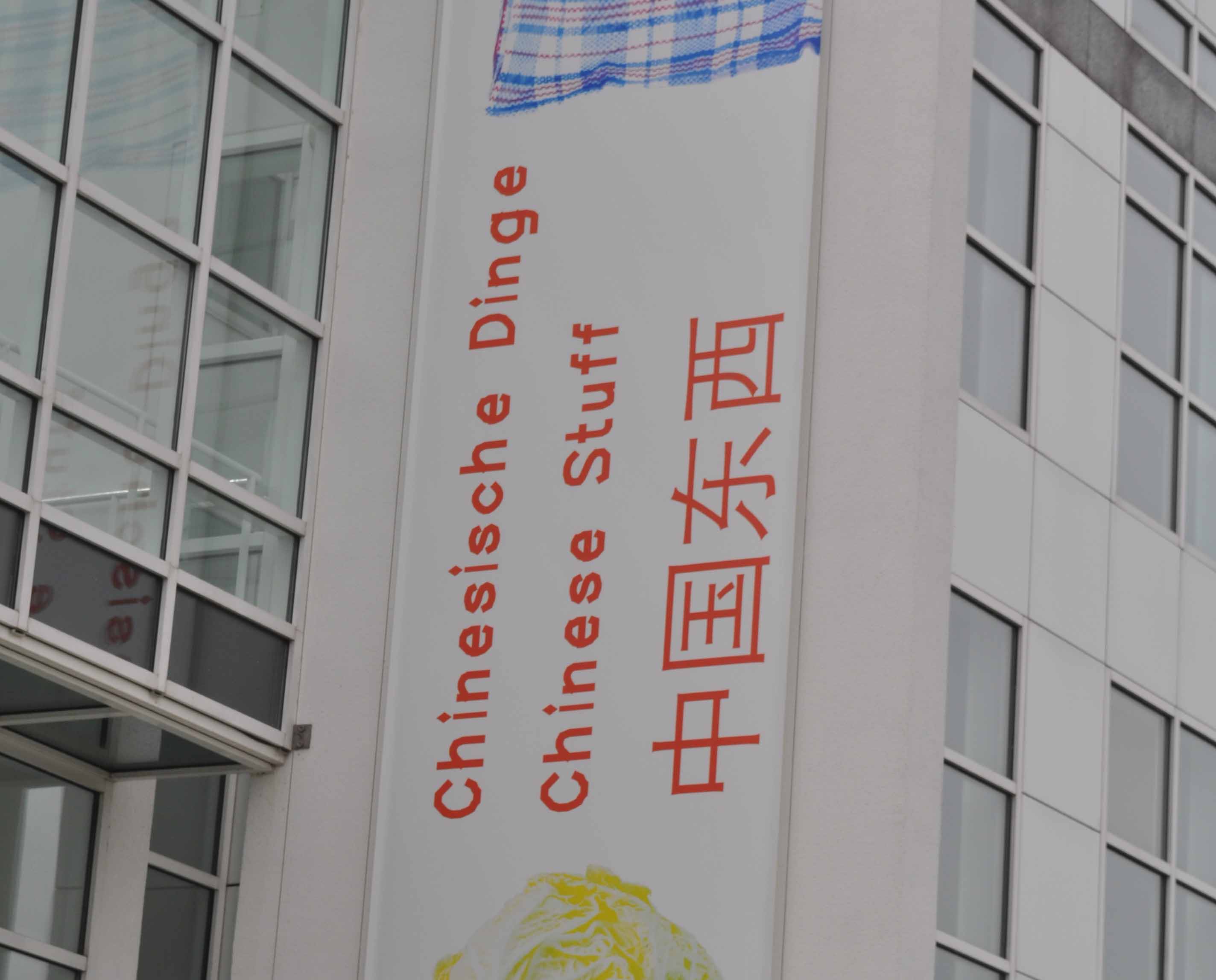When I visited the applied arts museum (Museum für Angewandte Kunst) in Frankfurt in June 2012, the exhibition advertised above had just ended.
Still, the four Chinese characters 中国东西 neatly illustrate two fundamental structural aspects of Mandarin Chinese.
The first is that each character, and thus each syllable, is associated with a meaning. So the characters 中国东西 mean ‘middle country east west’. It is not the case in English that each syllable is necessarily associated with a meaning: Modern Mandarin Chinese Grammar (Routledge, 2007) cites the example of the English word lettuce, neither of whose syllables – /ˈlɛ.təs/ – is associated with any meaning.
The second is that modern Mandarin Chinese likes to pair up its syllables to form disyllabic semantic units, termed bigrams. So 中国东西 consists of bigram 中国 (‘middle + country’ → ‘China’) followed by bigram 东西 (‘east + west’ → ‘stuff’).
Note that when东西 is pronounced dōngxī, i.e. with tone 1 on the second syllable, it means ‘east and west’, and that when it is pronounced dōngxi, i.e. with the neutral tone on the second syllable, it means ‘stuff’. Note too that this distinction is reflected in pinyin. See The Sounds of Chinese (CUP, 2007).
[separator style=”regular”]
(中 (zhōng, [tʂuŋ]55, ‘middle’) + 国 (guó, [kwo]35, ‘country’)) + (东 (dōng, [tuŋ]55, ‘east’) + 西 (xī, [ɕi]55, ‘west’)) → 中国东西 (Zhōngguó dōngxi, [tʂuŋ]55 [kwo]35 [tuŋ]55 [ɕi]2, ‘Chinese stuff’)

